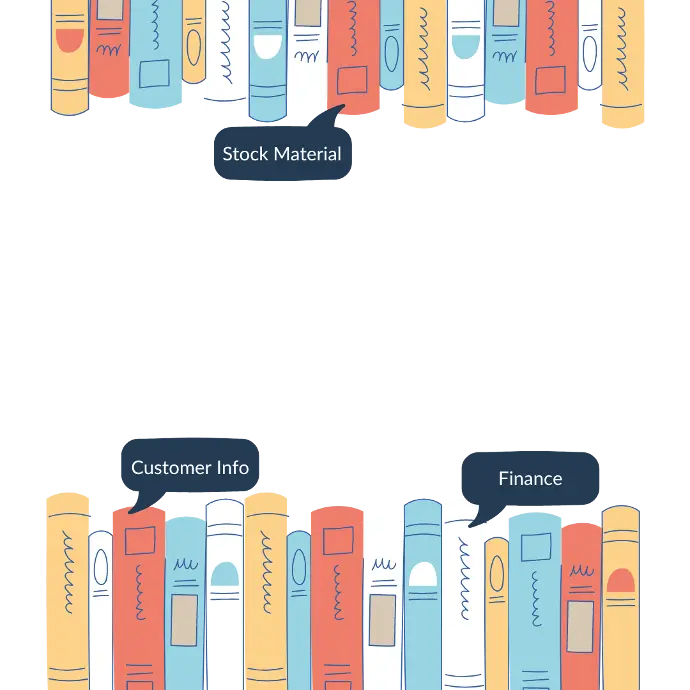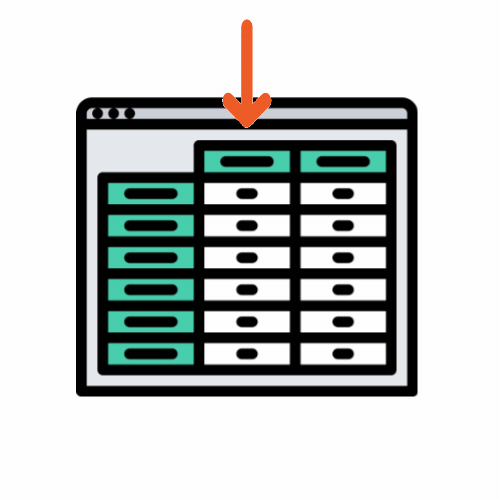-
Intro
-
Embark on a future-oriented career
-
- Quiz
-
-
-
Welcome at GLASS+
-
ERP in general
-
- Quiz
-
-
-
Discovering SAP
-
- Quiz
-
-
-
The importance of team spirit
-
- Quiz
-
-
"Key User" Versus "Consultant" SAP
-
- Quiz
-
-
Business Process at Glass+
-
BONUS : Tips for beginner
-
Fiori, the future of Business ?
-
Functional expertise - Common data
-
🚚 Sales & Distribution (SD) : Lead to Cash Business Process
-
🏭 Production Planning (PP) : Design To Operate Business Process
-
📦Extended Warehouse Management (EWM) : Warehouse and Inventory Business Process
-
🔧 Enterprise Asset Management (EAM) / Plant Maintenance (PM) : Enterprise Asset Management Business Process
-
💳 Material Management (MM) : Source to Pay Business Process
-
Quality Management (QM)
-
Human Capital Management (HCM) : Hire To Retire Business Process
-
💰 Financial Accounting (FI) & Controlling (CO) : Record to Report Business Process
-
Functional competence - Customizing
-
Functional competency - SAP Junior Consultant
-
Technical competence - Introduction to ABAP
-
Technical competence - Roles and authorizations
-
Glass+ : Migration to S/4HANA
-
Clean Core Concept
-
Certification C_IEE2E : SAP Certified Associate - Implementation Consultant - End-to-End Business Processes for the Intelligent Enterprise
-
Job search and preparation
-
Thank You !
Understanding the HANA Database [2/4]
⏱Reading time: 20 min
Have you ever wondered why SAP S/4HANA is able to process massive volumes of data in the blink of an eye? The answer lies in a revolutionary technology: the SAP HANA database.
In the previous chapter, we explored the key innovations of SAP S/4HANA, including its real-time analytics capabilities and process simplification. These impressive improvements are made possible thanks to a central technological advancement: the HANA database.
So, what makes HANA so special and why is it essential for the operation of S/4HANA? We will now demystify this technology using simple terms, suitable for those who are not developers but wish to understand the foundations of this in-memory database.
But first, let's go back to the beginning...
🤔 What is a Database?
A database is a system that allows for storing, organizing, and managing information in a structured manner. Think of it as a vast library where each book represents a set of data, such as customer information, product stocks, or financial transactions. Databases enable quick and organized access to this information for various applications and users.

Key Functions of a Database :
-
Storage : Safely storing data.
-
Management : Organizing data for easy and logical access.
-
Retrieval : Allowing users to access data quickly and efficiently.
Alright, we understand what a database is. But then, if the definition of a database is unique, why is there a difference between that of R/3 and that of S/4HANA?
The answer lies in how the data is stored and processed.
The Databases of R/3 and S/4HANA
Traditional Database (SAP R/3)
SAP R/3 uses traditional databases that primarily store data on hard drives.
Characteristics of Traditional Databases :
-
Storage on Hard Drive : Data is stored on physical disks, resulting in slower read and write times.
-
Sequential Processing : Data must be read sequentially, which slows down processes when dealing with large amounts of information.
-
Reports and Analysis : Generating reports often requires long periods of extracting and aggregating data from different tables.
In-Memory Database (SAP S/4HANA)
SAP HANA, the database used by S/4HANA, takes a radically different approach thanks to in-memory technology.
Characteristics of SAP HANA :
-
Storage in Random Access Memory (RAM) : Data is stored in RAM, allowing for much faster access and processing.
-
Parallel Processing : Multiple processes can access and analyze data simultaneously, without the read and write delays associated with hard drives.
-
Real-Time Analytics : Data can be analyzed instantly, enabling decisions based on current information.
Imagine that you need to find a specific book in a vast library, but you can only look at one book at a time. This takes time and requires a lot of moving from one shelf to another, which is exactly what traditional databases do when accessing data.
Imagine now a library where all the books are laid out on a massive table, and you can consult them all at once. You can access any book instantly and cross-reference without wasting time. This is exactly what HANA does by storing data in memory.

To fully understand what an in-memory database like SAP HANA is, it's important to know some basic concepts about data storage and memory.
Disk vs. Random Access Memory (RAM)
Disk Storage (HDD/SSD) :
-
Hard Disk Drives (HDD) : These are storage devices that use spinning disks to read and write data. HDDs are relatively slow compared to other modern technologies.
For further reading :
Think of a hard disk drive as a large library where each book (data) is stored on a specific shelf. Finding a book requires moving around the library and searching through the shelves.

-
Solid State Drives (SSD) : They use flash memory to store data, providing faster read/write speeds than HDDs but still slower than RAM.
For further reading :
An SSD is like a library where each book is stored in drawers that are more quickly accessible than shelves, but there is still a search time involved.

Traditional databases, like those used by SAP R/3, store data on these disks. This means that every time data is read or written, the system has to wait for the disk to complete its operation, which can be slow.
In-Memory Storage (RAM) :
-
RAM (Random Access Memory) : RAM is a form of volatile memory that allows for very fast reading and writing of data. It is used by computers to temporarily store the data they are currently working on.
For further reading :
Imagine RAM as a massive table where all the books (data) are open and immediately accessible. You can consult any book without having to move or search.

Différences entre Stockage sur Disque et RAM
Speed
RAM is much faster than hard disks and SSDs, as it has no moving parts and allows direct access to data.
Volatility
RAM is volatile memory, which means it loses its contents when the computer is switched off, unlike hard disks and SSDs, which retain data.
In an in-memory database like SAP HANA, all data is stored in RAM. This allows for much faster access to data as RAM is significantly faster than hard drives or even SSDs.
Functioning of an In-Memory Database
Columnar Storage
Traditionally, databases store data in rows, which is efficient for transactions (OLTP). Think of reading a book line by line. SAP HANA, on the other hand, stores data in columns, which is optimal for analytics (OLAP). This allows for quick access to specific data without having to read the entire table, similar to searching for a keyword in a dictionary.
Imagine an Excel spreadsheet where each column represents a type of data (name, address, phone number). Columnar storage allows for accessing all addresses without reading the other information.

In-Memory Processing (RAM)
With SAP HANA, all data is stored in RAM. Read/write operations are therefore instantaneous, enabling real-time analytics and transactions (OLTP and OLAP). Additionally, multiple operations can be performed simultaneously on the same data, further enhancing performance. It's like multiple people being able to access the same table of books at the same time without getting in each other's way.
Detailed Explanation
OLTP (Online Transaction Processing)
-
Definition : OLTP refers to systems that handle day-to-day transactions. This includes operations like order entry, payments, stock updates, etc.
OLAP (Online Analytical Processing)
-
Definition : OLAP involves systems used to perform complex analysis and reporting based on stored data. It allows for in-depth analysis to gain insights into trends and performance.
The SAP HANA database is designed to handle both online transaction processing (OLTP) and online analytical processing (OLAP) simultaneously from a single copy of data. This means you can perform real-time transactions and analytics without having to move data between different systems.
Let's take a concrete example at Glass+ :
-
OLTP : Imagine Glass+ receives an order for 10,000 bottles. The system instantly updates raw material stocks, schedules production, and records the order.
-
OLAP : At the same time, the management department analyzes production data to identify trends and optimize future raw material orders. They can instantly see the impact of the new order on stocks and production capacity.
You now have an overview of the power of SAP HANA. But this is just the beginning. The next step in our journey focuses on an equally crucial innovation: business process simplification with S/4HANA.
"Universal Journal," does that ring a bell ?
Il n'y a aucune réaction pour le moment.
